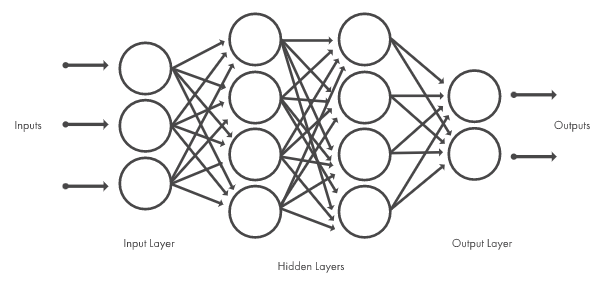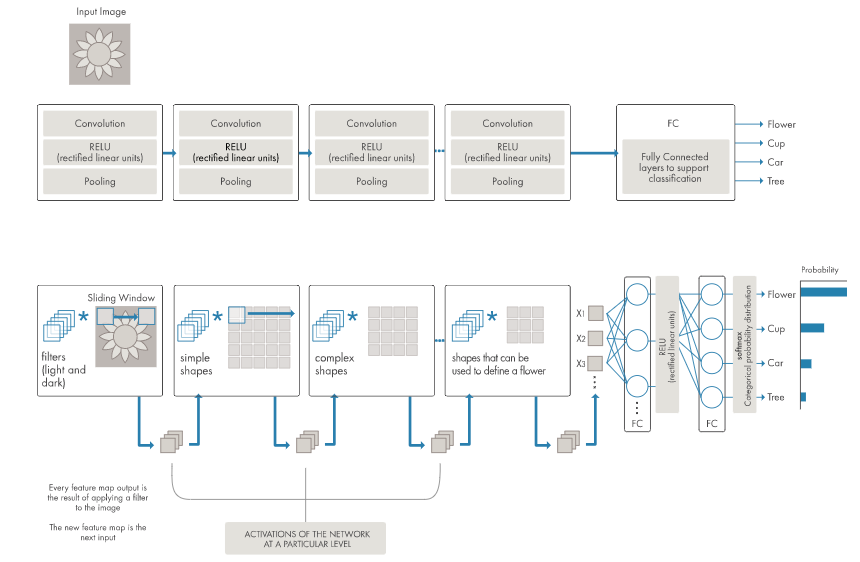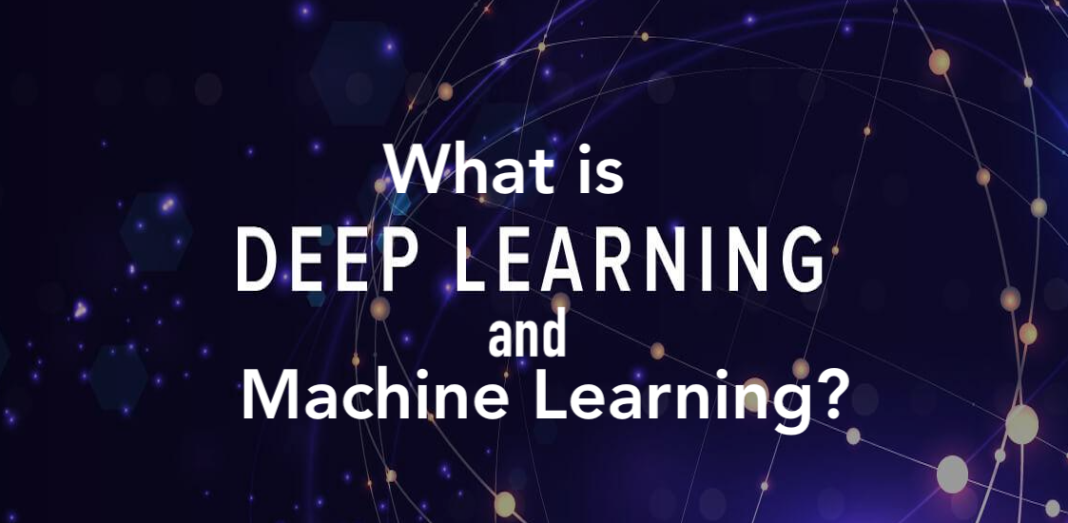What is Deep Learning and How Does it Work? By definition, deep learning is a machine learning technique that teaches computers how to do what humans does naturally: such as learning by example. By such definition, deep learning is the major technology in the forefront of autonomous / driverless cars. The tech enables them to easily recognize a safety sign on the road such as the stop sign. It also helps them to distinguish a pedestrian from a street light post.
Additionally, deep learning is the key to voice recognition & control in consumer devices like mobile phones, tablets, SmartTVs, and hands-free speakers like TLC. Lately, deep learning is getting serious attention and for good reason too. Why so? Its simply because it is achieving results that were not possible in time past.
In deep learning technology, a computer model is designed to learn how to perform classification tasks directly from images, text, or sound. It has been proven that deep learning models can achieve state-of-the-art accuracy. In most case, they exceed human-level performance. An example is the computer system learning & playing Chess with humans and even winning. That is to say that models are trained by using a large set of labeled data as well as neural network architectures that contain many layers of information.
Why Deep Learning Matters in the Technology
How does deep learning attain such impressive results?
Deep learning achieve an impressing result with a simple word; accuracy. As much as anything, they achieve recognition accuracy at higher levels than they have done in the past. This helps consumer electronics meet user expectations, and it is crucial for safety-critical applications like driverless cars. Recent advances in deep learning have improved to the point where deep learning outperforms humans in some tasks like classifying objects in images.
It was in the 1980s that deep learning was first theorized. However, there are 2 main reasons why it has only recently become useful to technology:
- The first theory is that deep learning requires large amounts of labeled data. For illustration; An autonomous vehicle development requires millions of images and thousands of hours of video.
- While the second theory states that deep learning requires substantial computing power. Also, high-performance graphics processing units (GPUs) have a parallel architecture that is efficient for deep learning. But when there’s a combination with clusters or cloud computing, it reduces application time. Meaning that; it enables development teams to minimize training time for a deep learning network from months to few hours or even minutes.
Generally, Cloud Computing Technology helps Human Resources Build a Smart Service Platform with upgrades.
Examples of Deep Learning at Workspace
There are 5 examples of deep learning in workspace around the world. Its applications are utilized in several industries ranging from automated driving to medical devices.
1. Automated Driving:
Car companies as well as other automotive researchers are using deep learning to automatically detect objects in driverless cars. Objects such as stop signs and traffic lights are among the basics of their research. In addition, the main focus for deep learning is used to detect pedestrians, which helps reduce road accidents.
2. Aerospace and Defense:
In the military defence system, deep learning is used to identify objects from satellites that locate areas of interest. It also helps to identify safe or unsafe zones for marines.
3. Medical Research:
In the medical sector, oncologist researchers are using deep learning to automatically detect cancer cells. Teams at University of California, Los Angeles (UCLA) built an advanced microscope that yields a high-dimensional data set. It is then used to train a deep learning application to accurately identify cancer cells.
4. Industrial Automation:
In big manufacturing companies, deep learning is helping to improve worker safety around heavy machinery. How? By automatically detecting when people or objects are within an unsafe distance of machines.
5. Electronics:
Electrical engineers use deep learning is being used in automated hearing and speech translation. For example, home assistance devices that respond to your voice and know your preferences are powered by deep learning applications. Google voice search is another example. Mobile phones voice recognition, bluetooth speakers are not left out in the illustrations.
How does Deep Learning Work?
Almost every deep learning methods use neural network architectures. That’s the reason why deep learning models are usually called deep neural networks.
Note that the term “deep” usually refers to the number of hidden layers in the neural network. However, Traditional Neural Networks only contain two to three hidden layers, while deep networks can have up to a hundred & fifty.
Going forward, deep learning models are trained by using large sets of labeled data and neural network architectures. They can learn features directly from the data without the need for manual feature extraction.

Convolutional neural networks (CNN or ConvNet)
As a scholar, you have to know that one of the most popular types of deep neural networks is known as convolutional neural networks (CNN or ConvNet). What does a CNN do? It involves learned features with input data. Secondly, it uses 2D convolutional layers, making this architecture well suited to processing 2D data, like images.
You do not need to identify features used to classify images because CNNs eliminate the need for manual feature extraction. How the CNN works is that it extract features directly from images. These relevant features are not previously trained; they are simply learned while the network trains on a collection of images. This is to say that the automated feature extraction makes deep learning models highly accurate for computer vision tasks such as object identification and classification.

By using tens or hundreds of hidden layers, CNNs learn to detect different features of an image. All the hidden layer increases the complexity of the learned image features. Lets look at this illustrstion; the first hidden layer could learn how to detect edges. Lastly it learns how to detect more complex shapes specifically catered to the shape of the object we are trying to recognize.
What’s the Difference Between Machine Learning and Deep Learning?
Difference of DL & ML: Deep learning is a specialized form of machine learning. While a machine learning workflow starts with relevant features being manually extracted from images. Next, the features are then used to create a model that categorizes the objects in the image. By making use of a deep learning workflow, relevant features can automatically be extracted from images. Furthermore, deep learning performs “end-to-end learning” – where a network is given raw data and a task to perform, such as classification, and it learns how to do this quickly & automatically.
In addition, there’s another key difference where deep learning algorithms scale with data, although shallow learning converges. What is Shallow learning? It refers to machine learning methods that plateau at a certain level of performance when you add more examples and training data to the network.
What is the advantage of deep learning? A major advantage of deep learning networks is that they often continue to improve as the size of your data increases in number.

Another difference of DL and ML: First, in machine learning, you manually choose features and a classifier to sort images. On the other hand, deep learning, feature extraction and modeling steps are automatic.
Choosing Between Machine Learning and Deep Learning
Machine learning offers a variety of techniques and models you can choose based on your application, the size of data you’re processing, and the type of problem you want to solve. While on the contrary, a successful deep learning application requires a very large amount of data (thousands of images) to train the model. This also includes GPUs, or graphics processing units, to rapidly process your data in no time.
my advise is; when choosing between machine learning and deep learning, make sure to consider whether you have a high-performance GPU and lots of labeled data. But if you don’t have either of those things, it may make more sense to use machine learning instead of deep learning. Why would I say that? It simply because deep learning is generally more complex, therefore you’ll need at least some thousand images to get reliable results. Having a high-performance GPU means the model will take less time to analyze all those images.
Related Topics
- 7 Steps To Get Started in Machine Learning | Data Science
- Man and Machine Work Together: Collaboration increases Productivity
How to Create and Train Deep Learning Models
The three most common ways people use deep learning to perform object classification are:
1. Training from Scratch
To train a deep network from scratch, you gather a very large labeled data set and design a network architecture that will learn the features and model. This is good for new applications, or applications that will have a large number of output categories. This is a less common approach because with the large amount of data and rate of learning, these networks typically take days or weeks to train.
Most deep learning applications use the transfer learning approach, a process that involves fine-tuning a pretrained model. You start with an existing network, such as AlexNet or GoogLeNet, and feed in new data containing previously unknown classes. After making some tweaks to the network, you can now perform a new task, such as categorizing only dogs or cats instead of 1000 different objects. This also has the advantage of needing much less data (processing thousands of images, rather than millions), so computation time drops to minutes or hours.
Transfer learning requires an interface to the internals of the pre-existing network, so it can be surgically modified and enhanced for the new task.
2. Feature Extraction
A slightly less common, more specialized approach to deep learning is to use the network as a feature extractor. Since all the layers are tasked with learning certain features from images, we can pull these features out of the network at any time during the training process. These features can then be used as input to a machine learning model such as support vector machines (SVM).
3. Accelerating Deep Learning Models with GPUs – MATLAB
Do you know that training a deep learning model can take a long time, from days to weeks? Oh yes! That true. But using GPU acceleration can speed up the process more significantly. You can choose to make use of MATLAB with a GPU to reduce the time required to train a network. This GPU can drastically reduce the training time for an image classification problem from days down to hours. In training deep learning models, MATLAB uses GPUs (when available) without requiring you to understand how to program GPUs explicitly.

Related searches
- Download deep learning pdf
- Deep learning vs machine learning
- Full list of deep learning example
- Explanation of deep learning algorithms
- Apply for deep learning course
- Watch deep learning tutorial on YouTube
- What is deep learning ai
- Free deep learning javatpoint



![How To Learn Artificial Intelligence for Free [7 Steps] How To Learn Artificial Intelligence for Free [7 Steps]](https://hybridcloudtech.com/wp-content/uploads/2021/04/How-To-Learn-Artificial-Intelligence-for-Free-7-Steps-100x70.png)



